Five facts about Day of the Dead in Mexico
05.10.2017 | updated: 01.12.2023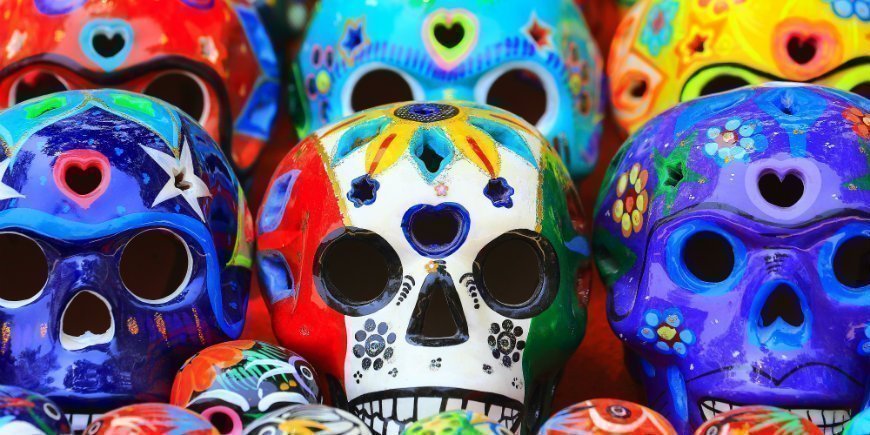
Smiling skeletons, colourful sugar skulls and festive picnics at the cemetery.
A typical scene every year in early November when Mexicans celebrate Day of the Dead, a festival to mark the return to earth of the deceased to greet their relatives.
Mexico transforms into one giant party, with outlandish parades, feasts and throngs of people dressed as skeletons in honour of the dead.
But why do Mexicans really celebrate death? And how do they do it?
What is Day of the Dead?
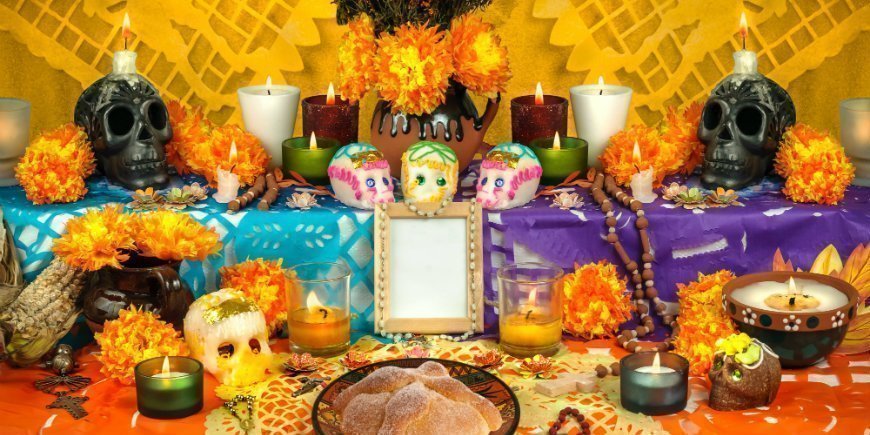
Day of the Dead or Día de los Muertos is above all a life-affirming celebration to commemorate the dead.
The festival celebrates the return of the spirits of the deceased to earth to be honoured by the living with all the things they loved when they were alive.
Instead of grieving for dearly departed family members, many Mexicans believe that the deceased should be commemorated with colourful parades and excursions to the family burial site, where everyone eats the deceased’s favourite meal and shares funny stories about the person’s life.
When is Day of the Dead in 2024?
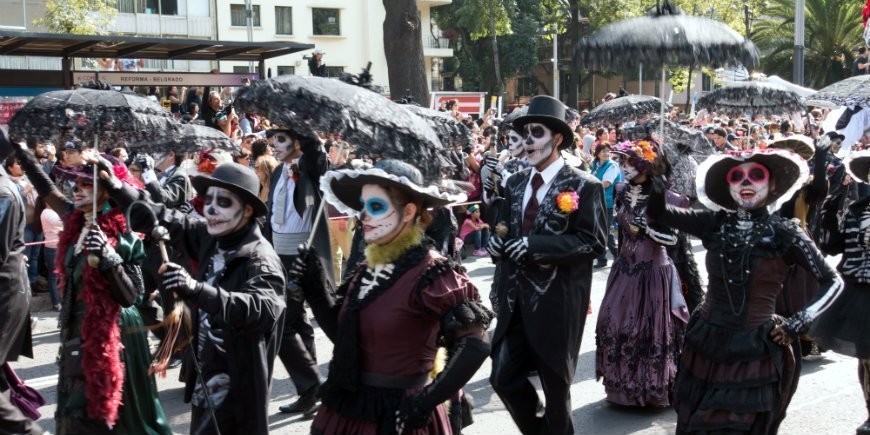
Day of the Dead is celebrated on 2 November 2024, and the festival takes place on the same date every year.
The celebrations begin on 31 October, when several towns and cities kick off the festivities with parades and decorated markets, and continue until 2 November, the official Día de los Muertos.
Many Mexicans also spend the night between the 1st and 2nd November at the cemetery with candles and flowers to help the spirits of the dead find their way back to the world of the living.
Deceased children are traditionally remembered on 1 November, while the elderly deceased are celebrated on 2 November.
The history of Day of the Dead – Where does it originate from?
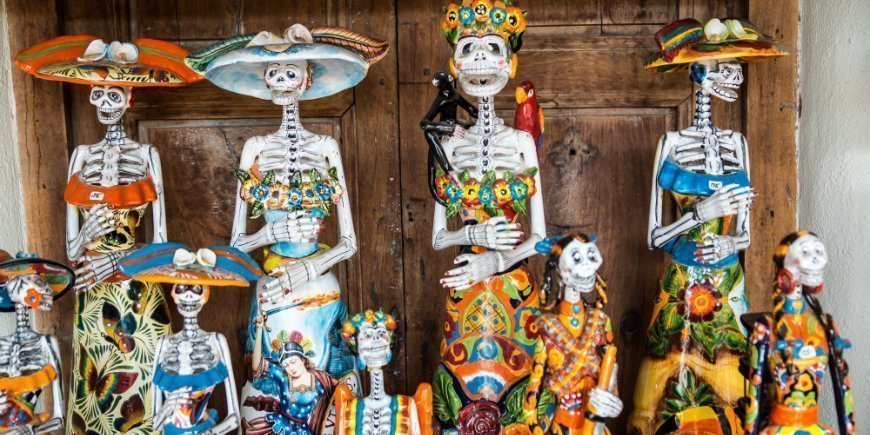
Day of the Dead is an age-old tradition dating back to the Aztecs and Mayans, more than 2,000 years before Spain colonised Mexico.
The festive day is a mix of ancient Pre-Columbian rituals and the Catholic holiday All Saints’ Day, which together form the framework for the commemoration of the dead.
Today, Day of the Dead is one of Mexico’s most important holidays, and on the UNESCO List of World Intangible Cultural Heritage.
What are the traditions on Day of the Dead?
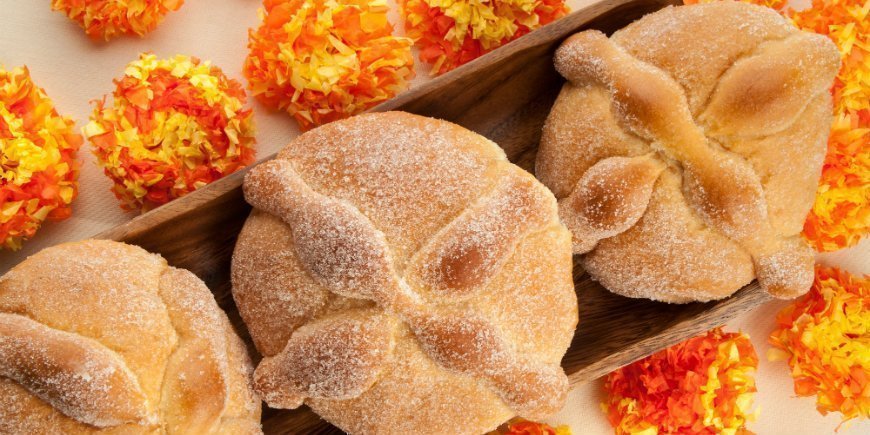
Mexicans celebrate Day of the Dead in many different ways.
While many people participate in the big, colourful parades with music and deathly costumes, others spend the day and night at the cemetery with the family, where the deceased are celebrated with all the things they loved when they were alive.
Many families also build large altars where sacrificial gifts for the deceased are placed.
When it comes to food, Mexican children often eat as many sugar skulls (calavera de azúcar) as they can, while the adults make “Day of the Dead bread” (pan de muerto), special bread baked for the holiday every year with the top shaped like bones.
Where can I experience Day of the Dead?
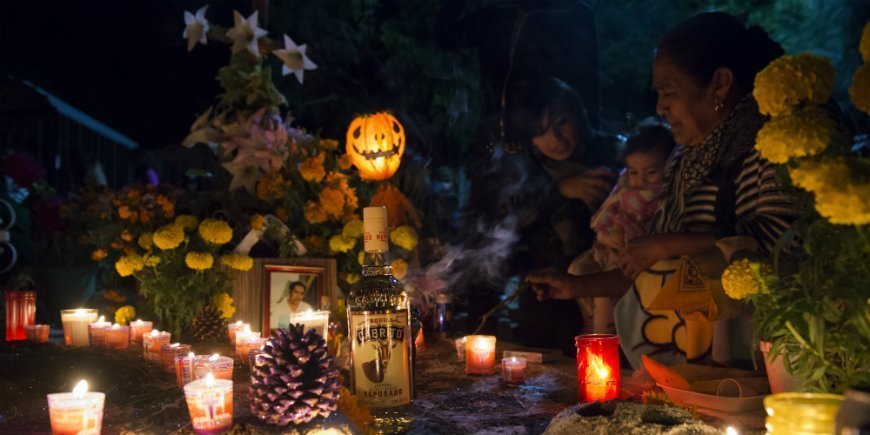
The great day of celebration of the dead takes place all over Mexico.
In the metropolis, Mexico City, there is a special festive atmosphere when Mexicans celebrate the dead. The streets are filled with thousands of costume-clad revellers, colourful stalls and lots of music.
At several of the city’s many cemeteries, people gather with candles and flowers while waiting for the deceased to return to earth.
In the Maya region of Yucatán, the atmosphere on Day of the Dead is also amazing. The locals gather at cemeteries, in the city centre or at one of the many concerts held to mark the holiday.
If you are travelling to Mexico between 31 October and 2 November, you will undoubtedly experience the interesting, if not a little morbid, festival with your own eyes.
TourCompass – From tourist to traveller
-
General Info
Receive all the latest news and offers delivered to your inbox!
Registered in England.
Registered Office:
Nucleus House 2
Lower Mortlake Road
Richmond, TW9 2JA
Company no.: 11454726

E-mail: info@tourcompass.co.uk
ATOL protected no. 10558.
ABTA member no. Y6104.
Read more.